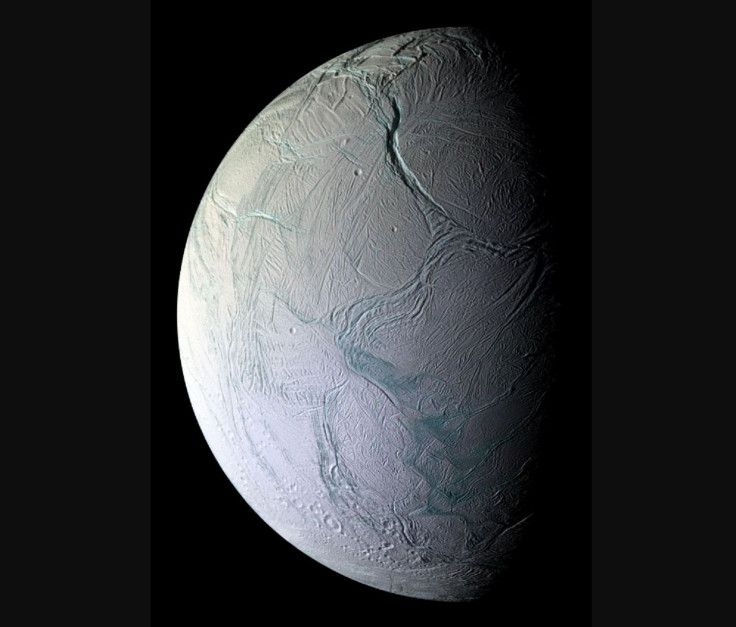Researchers Crack Mystery Of How 'Tiger Stripes' Formed On Saturn's Moon Enceladus

KEY POINTS
- Enceladus has been of particular interest to scientists because of its oceans and so-called tiger stripes
- Enceladus's "tiger stripes" are actually fissures through which ocean water spews out into space
- Researchers of a new study found that Enceladus's gravitationally-induced deformation may have something to do with the tiger stripes' formation
Saturn’s sixth-largest moon, Enceladus, has been of particular interest to scientists, not just because of its subsurface oceans but also because of the unique “tiger stripe” appearance on its surface. What’s even more interesting is that the tiger stripes are actually fissures through which icy material from the oceans spew out into space.
“First seen by the Cassini mission to Saturn, these stripes are like nothing else known in our Solar System,” lead author of a new study about Enceladus's tiger stripes, Doug Hemingway of the Carnegie Institute of Science, said. “They are parallel and evenly spaced, about 130 kilometers long and 35 kilometers apart. What makes them especially interesting is that they are continually erupting with water ice, even as we speak. No other icy planets or moons have anything quite like them.”
For the new study published in Nature Astronomy, Hemingway and two co-authors, Michael Manga of UC Berkeley and Max Rudolph of University of California, Davis, used models to look into why the tiger stripes are only on the moon’s south pole as well as why they are so evenly spaced.
Interestingly, researchers found that both poles are actually likely to split open, but it just so happened that the south pole cracked first. This is because of Enceladus’s strange orbit that brings it sometimes closer and sometimes farther to the moon. It caused the moon’s shape to be slightly deformed, with the ice sheets at the poles slightly thinner and therefore more susceptible to breakage.
As for why the stripes appear to be so evenly spaced, the researchers determined that it was because the first stripe, Baghdad, stayed open when it first cracked. It, thus, allowed ocean water to keep spewing out from its crevice, and eventually caused three more parallel cracks to form due to the weight of the ice and snow that built up as a result of the spewing ocean water.
According to researchers, Enceladus’s strange orbit keeps the stripes from healing because of the repeated widening and narrowing of the cracks as well as the flushing of water in and out of them.
A larger moon’s gravity would have prevented the cracks from opening all the way, but the unique circumstances surrounding Enceladus makes the tiger stripes a distinctive feature.
“Since it is thanks to these fissures that we have been able to sample and study Enceladus's subsurface ocean, which is beloved by astrobiologists, we thought it was important to understand the forces that formed and sustained them,” Hemingway said.
© Copyright IBTimes 2024. All rights reserved.






















